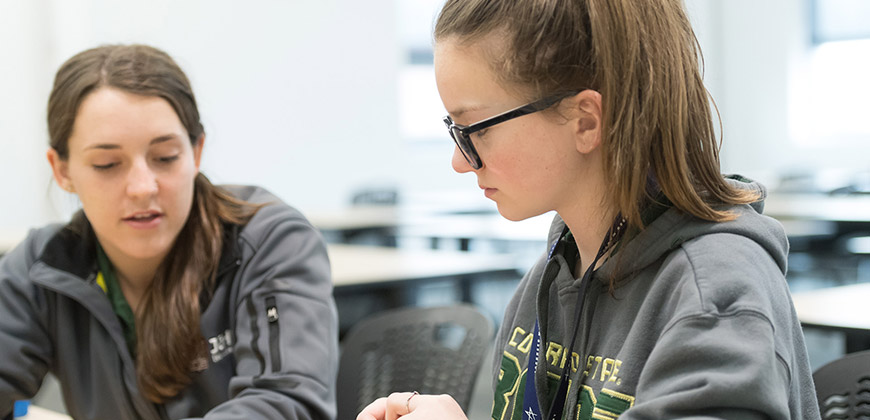
“Diversity fosters creativity” is one of the driving ideas behind an initiative led by Rebecca Atadero, associate professor in the Department of Civil and Environmental Engineering. Her goal: making diversity and inclusion integral components of engineering education at Colorado State University.
The five-year, $1.9 million collaborative project is funded by the National Science Foundation’s Improving Undergraduate STEM Education program. It expands on another exploratory study started in the Walter Scott, Jr. College of Engineering in 2014 to support the retention and success of underrepresented students.
“We want to be in the classrooms educating all of our students about how diversity and inclusion are important to engineers,” Atadero said. “Diverse teams can produce better results, but only when team members recognize the value of diversity and work in inclusive ways that leverage all kinds of diversity such as different problem solving approaches and identities.”
Expanding the current program
While the 2014 project aimed to integrate diversity and inclusion concepts into first-year classes, through this new initiative Atadero hopes to positively impact sophomore- and junior-level courses as well. With collaborating principal investigators Karen Rambo-Hernandez at West Virginia University and Christina Paguyo at the University of Denver, this effort will expand beyond the CSU campus to a total of four universities (the fourth partner school will be selected sometime in 2018). Whereas the first project only surveyed students over the course of one semester, the expansion will provide much more detailed data.
“We’ll be able to track students over the course of their whole career in school, rather than just surveying students a few times during a single semester,” Atadero said.
Rather than adding additional courses to the curriculum, Atadero and colleagues at the partner institutions plan to incorporate technical examples and case studies that highlight diversity and inclusion into existing course material. For example, these case studies might consider the first generations of airbags, which were too powerful for smaller people such as women and children, or voice recognition software that didn’t work with female or accented voices. All people carry with them unconscious biases, Atadero says, and by recognizing the presence and impacts of biases and working with different perspectives, engineers can do a better job of meeting people’s needs and improving quality of life for all.
“We want to integrate concepts of inclusion and equity with the technical content so students can see directly how it applies to their degree and ultimately their career,” Atadero said. “They want to know why they’re learning these concepts, and how it fits in with the big picture.”
Encouraging an inclusive mindset
For the first year of the grant, Atadero and the research team will work to implement first-year activities at CSU, West Virginia University and University of Denver, while also working with course instructors to develop new activities for sophomore-level courses.
By Fall 2019, course material will be introduced into first-year and sophomore-level classes, with junior-level classes following in Fall 2020. Rambo-Hernandez and Paguyo will collect and interpret data gleaned from participating students throughout the study. Using the information collected, Atadero hopes to encourage more awareness among the students involved, and implement lasting curriculum improvements that maintain this mindset.
“There are so many reasons to promote greater equity in STEM: helping us attract and retain the best talent, making desirable STEM careers attractive and welcoming to all, promoting innovative design solutions, and helping engineers better serve society through enhanced customer and stakeholder interaction,” Atadero said. “If our engineering students are prepared to interact with different perspectives, understand how they can work inclusively with different people, and have the chance to practice working on teams, hopefully they will take these skills and experiences with them into their careers, helping to transform the engineering profession.”